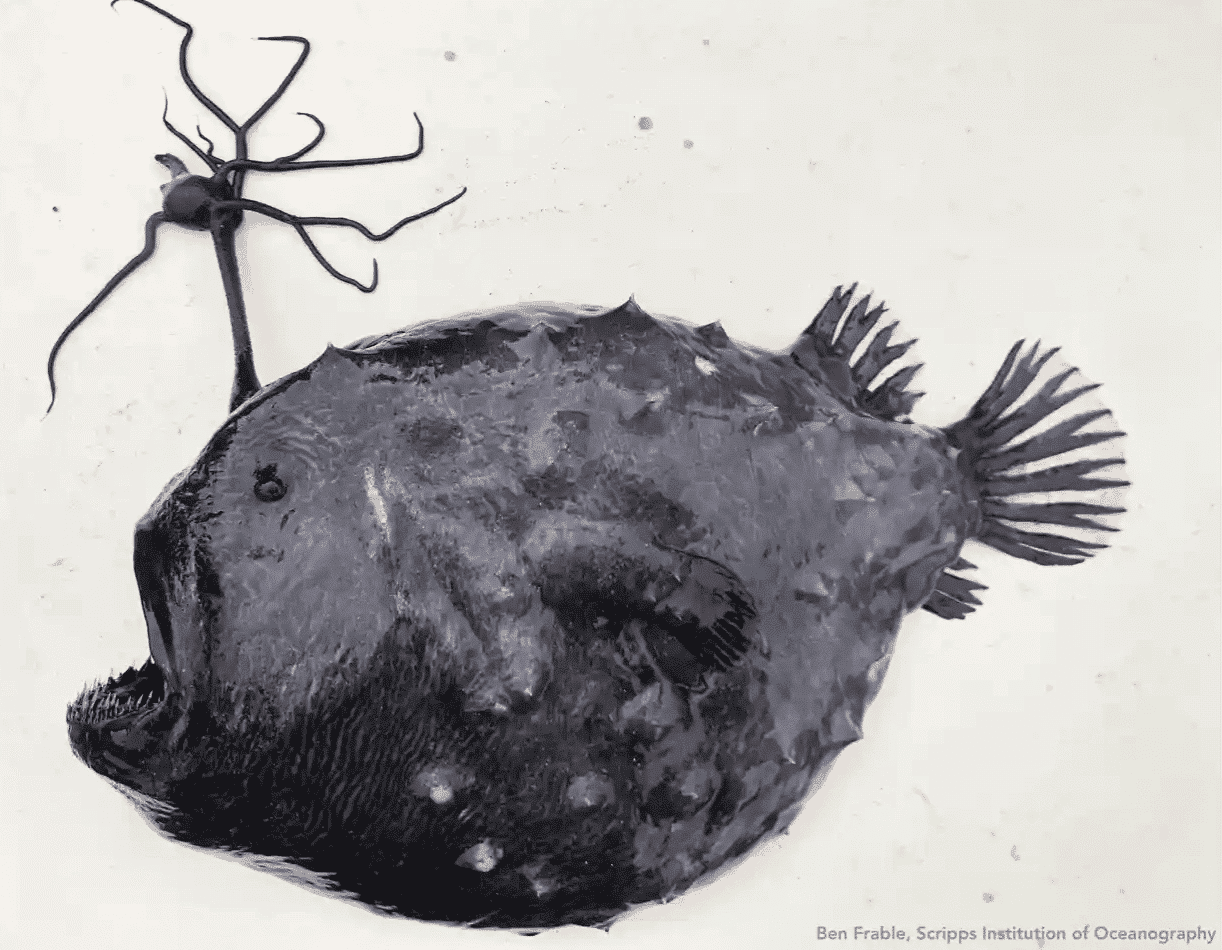
Rare Pacific Footballfish Washes Up on California Beach for Third Time This Year

The latest Pacific footballfish to wash up in California. Ben Frable / Scripps Institution of Oceanography at UC San Diego
For the third time this year, a rare deep-sea fish has washed up on a California beach.
The Pacific footballfish, one of the largest species of anglerfish, was found on Swami’s Beach in Encinitas in San Diego County on December 10, CBSLA reported. Lifeguards alerted scientists, who took it to be studied at the Scripps Institution of Oceanography.
“The fact that a few washed up this year might just be serendipity for us,” Ben Frable, an ichthyologist and the Collection Manager of Fishes at Scripps Institution of Oceanography, told The Guardian.
Rare find‼️ A Pacific #footballfish, one of the largest species of #anglerfish, washed ashore near Encinitas last Friday. Lifeguards notified scientists about the unique #deepsea creature, and Scripps scientist Ben @Frable was able to collect it for research and preservation. pic.twitter.com/nP76zzwBa4
— Scripps Institution of Oceanography (@Scripps_Ocean) December 14, 2021
Pacific footballfish usually live thousands of feet below the ocean and, like other anglerfish, are known for using a bioluminescent bulb that hangs from their heads to attract prey. Only the females use this novel technique, however; male anglerfish attach themselves to their mates and lose all of their internal organs including their eyes. Anglerfish gained above-sea fame in the Pixar movie Finding Nemo.
“So if you’ve seen ‘Finding Nemo,’ this is portrayed in ‘Finding Nemo’ where Dory sees a very beautiful light, swims to it, it’s a giant anglerfish, very scary, they almost get eaten,” Frable told CBSLA.
This particular Pacific footballfish is a mature female nearly 13 inches long and 5.5 pounds, according to Scripps. Only 31 specimens of this fish have ever been collected, but the strange thing is that two of those collections occurred in California this year.
Footballfish are typically found at depths of 650 to 2,600 feet, said @Frable, but there is still much we don't know about these creatures. A different #footballfish was spotted at Black's Beach last month, but scientists weren't notified in time to collect it. pic.twitter.com/rI8Dqkzsi3
— Scripps Institution of Oceanography (@Scripps_Ocean) December 15, 2021
In May, one of these rare fish washed up along Crystal Cove State Park and eventually ended up displayed at the Los Angeles County Natural History Museum, CBSLA reported. Another was photographed on San Diego County’s Black’s Beach November 13, but was never collected.
“Experts don’t have any evidence to theorize why several deep-sea fish have washed ashore recently, but are interested in learning more about the specimens that have been collected, as well as any new ones that might wash up,” Scripps tweeted.
However, Frable told The Guardian that he didn’t think the finds were a sign that anything was wrong, because then many more would be showing up dead. Instead, he saw the occurrence as a chance to learn more about a rare and unusual species.
“There’s a lot we don’t know about this species in general,” he said. “It is exactly the type of thing we want to put on display so people can see it and learn about the world around them and about the strange creatures that are in their own backyard.”

 233k
233k  41k
41k  Subscribe
Subscribe 